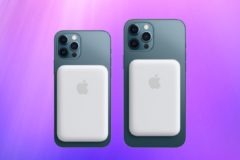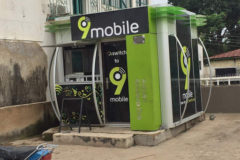Has it really been that long ago, when mobile OEM execs were laughing at how stupid touchscreens were, and how they’d never replace devices with physical buttons? Yeah, six long years since the first iPhone, which is eons in mobile. First they ignored it. Then they laughed at it. Then they fought it. Then the iPhone won. And along with it, the touch screen form factor.
So welcome to the present, 2013 AD where in spite of rows of suit clad naysayers, touch screens are now for all intents and purposes, the default mobile form factor. Not yet ubiquitous, no. But it’s getting there. Physical keys are becoming a quaint oddity, even down to low end phones — these days it seems that people don’t care how shitty your phone is. All will be forgiven, as long as you can touch and swipe it.
Touchscreen technology itself has come a long way. I don’t hear a lot of ranting these days about how hard it is to type without physical keys. They fixed all of that with haptic feedback, intelligent gestures, text prediction…autocorrect can still be a real pain, but it keeps getting better, yes?
By now, almost everyone has used a touchscreen device in some shape or form. But the road to touchscreen ubiquity itself isn’t very pretty, littered as it is with the carcasses of many mutant phones – touch and type hybrids that never quite stuck. Apparently, people wanted touchscreens, but too many people — chronic texters, BBM junkies and email warriors — still lived and died by QWERTY. The dilemma of satisfying both vocal customer demographies led OEMs to make all kinds of awkward, mutant form factors that slid to the side, to the top, or even snapped shut like clam shells.
In the end, the QWERTY strain lost to the dominant touchscreen gene. Nokia left physical keyboards behind with Symbian Anna — the E6 and E7 — anyone remember those? On Android, Samsung never took QWERTY seriously, releasing them at the low end. So we never took them seriously either. HTC stopped making them a long time ago. The others — Motorola, LG, are irrelevant. Save for a last stronghold in BlackBerry’s dwindling userbase, QWERTY might as well be dead.
This morning I’ll be taking delivery of the 30k smartphone I was trying to decide on the other day. Till now, I’ve been using the Nokia E63 and the Samsung Galaxy Pro, a QWERTY and QWERTY-touch hybrid. Yes, I’m a luddite. Up till now, I’ve always had a physical keyboard, and the impending transition to a full touch screen gives me some concern. Can I do this? Do all the mobile typing I used to do with physical keys, on a touchscreen?
Now I can understand how some people are tripping over themselves to buy the wildly over-priced the BlackBerry Q10 touch and type hybrid. It’s not just the crazy Nigerian swag appeal. There’s some serious QWERTY nostalgia going on here. A lot of people still can’t do without or miss the reassuring, clicky feeling that only physical keys can give. And right now, BlackBerry is the only OEM in the world that makes high end phones with physical keyboards. The last haven for the last of the QWERTY holdouts.
BlackBerry knows it, and are using that knowledge to great effect.
I know it sounds a bit doty, craving jurassic hardware as advancements in augmented reality, speech recognition and wearable technology are increasingly upon us. But I still ask. Is it wrong to want a QWERTY device in 2013?
Cell Phone designed by Grant Taylor from The Noun Project


















